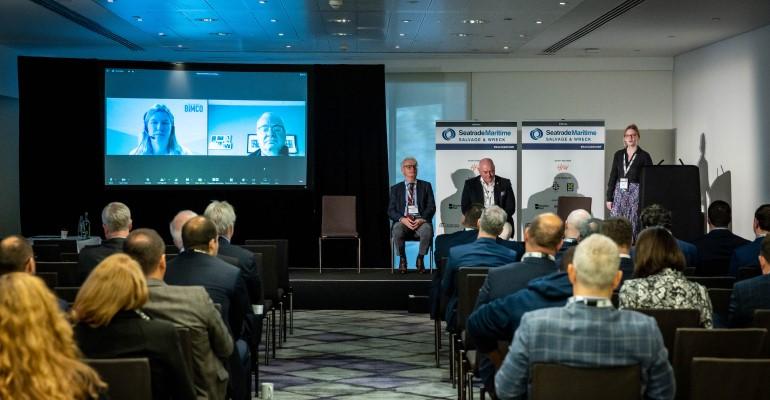Speaking at Seatrade Maritime Salvage and Wreck in London last week, a panel of experts discussed how the introduction of future fuels and related cargoes might affect the decision to offer a port of refuge.
On the current state of places of refuge, Frans van Zoelen, Chair, IAPH Legal Committee Special Projects and Head Legal Emeritus, Port of Rotterdam Authority, said it is essential that ports have contingency plans ready with a solid understanding of the dynamics around places of refuge and the various hazards each ship and cargo type may pose.
“I think it's also a question of capacity building. A lot of ports understand what's going on around places of refuge and ships in distress but there are ports who need a helping hand and explaining to them what is needed. There I see role for the IMO, for instance, to help them with capacity building, and improving the knowledge around this extremely important topic,” said Zoelen.
Bev MacKenzie, Head of Intergovernmental Engagement, BIMCO, said: “There's an interesting point in the decision-making framework about what the person concerned knows, or ought to know, about the hazard or risk.
“That's quite interesting in light of new fuels and new cargos; what should a person know about a fuel that's brand new? The gaps in our knowledge on some of these fuels are immense. That does raise the question - how will this decision making framework bring in the these new fields?”
Mackenzie praised some subtle recent improvements in the language of the IMO ports of refuge guidelines: “One of the things we like about the guidelines is it's much more collaborative. It's a subtlety but they actually now actively encourage coastal states to work regionally. So regional co-operation and co-ordination centers and these kinds of common frameworks. This is really useful for when a country doesn't have a competent authority, but a neighbouring country does,” said Mackenzie
Cees Boon, Safety Advisor, Harbourmaster, Port of Rotterdam said Rotterdam has a number of teams trained to respond to various emergency situation which can arise. Things tend to start out chaotic, said Boon, but as a port of refuge Rotterdam always tries to help a vessel where it can without endangering the port community.
Boon noted that Rotterdam is in a privileged when it comes to new fuels, as vessels are already bunkering LNG at the port and ships using methanol have already called.
“Even when you are just the port of call, you have to prepare for the future. With future fuels for instance, when a vessel with 17,000 cubics of ammonia will enter your port for loading or unloading containers without blinking you also have to prepare for it in your incident response. We are aware of that will be different for every port, and even the timeline will be different for everyone,” said Boon.
Kuba Szymanski, Secretary General, InterManager raised the question of the freedom of a ship’s master to ensure the safety of crew and cargo. If an LNG carrier were in port where a strong storm was raging outside, could a master just say the ship is staying for two days?
“Is it physically possible for a master to make this decision? Immediately the port would say ‘it’s nothing to do with us’ because the berths are private and individual, and that’s it – the vessel is kicked out for the salvors to deal with later,” said Szymanski.
Szymanski also commented on the case of the MSC Flaminia which caught fire in 2012 with the loss of three lives. The salvage and firefighting operation in that case was based on the equipment and cargo declared, but some of the cargo was misdeclared which complicated the operation. An explosive chemical was stored in the hold rather than on the deck as it was incorrectly labelled and declared.
Mackenzie said there was a hierarchy of response in play when it came to marine casualties: “I think it's important in the context that place of refuge is really used for a ship in need of assistance, so that it can actually stabilize its condition and reduce the risk navigation and protect human life and the environment. Rather than a place of refuge being something that is needed in a in a complete absolute disaster… sometimes it's use get the situation back on track. It's a preventative step using a place of refuge. If a ship is in real danger, then the convention search and rescue, hierarchy conventions will always come into play.”
Copyright © 2024. All rights reserved. Seatrade, a trading name of Informa Markets (UK) Limited.
Add Seatrade Maritime News to your Google News feed.  |

